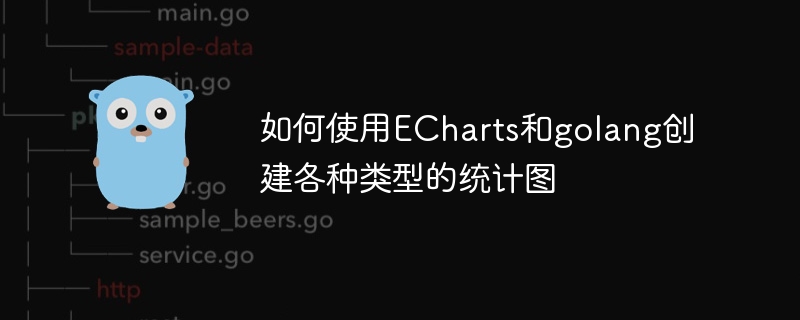

How to use ECharts and golang to create various types of statistical charts
With the advent of the big data era, data visualization plays a vital role in all walks of life character of. Data visualization not only helps us better understand and interpret data, but also helps us discover patterns and trends in the data. ECharts is a very powerful open source chart library that can help us easily create various types of statistical charts. This article will introduce how to use ECharts and golang to create various types of statistical charts, and attach specific code examples.
First of all, we need to introduce ECharts related dependencies into the golang project. ECharts provides an open source library for golang, which makes it easy to use ECharts in golang. We can use the go get command to obtain the library:
go get -u github.com/go-echarts/go-echarts@v1.0.0
After installing the dependencies, we can start using ECharts to create various types of statistical charts. The following takes bar charts and line charts as examples to introduce how to use ECharts to create these two types of statistical charts.
First, we need to create a histogram object. You can create a histogram object by calling the gcharts.NewBar method:
bar := charts.NewBar()
Next, we can add data to the histogram object. Add X-axis and Y-axis data by calling the bar.AddXAxis and bar.AddYAxis methods:
bar.AddXAxis([]string{"Apple", "Banana", "Orange", "Grape", "Watermelon"})
bar.AddYAxis("Fruits", []int{10, 15, 20, 12, 25}) Then, we can call bar. Render method to render this histogram object and save the generated HTML code to a file:
f, err := os.Create("bar.html")
if err != nil {
log.Fatal(err)
}
bar.Render(f)Finally, we can open the generated bar.html## in the browser #File to view this histogram:
open bar.html
gcharts.NewLine method:
line := charts.NewLine()
line.AddXAxis and line.AddYAxis methods:
line.AddXAxis([]string{"Jan", "Feb", "Mar", "Apr", "May", "Jun"})
line.AddYAxis("Sales", []int{120, 200, 150, 80, 70, 110}) line.Render method to render this line chart object and save the generated HTML code to a file:
f, err := os.Create("line.html")
if err != nil {
log.Fatal(err)
}
line.Render(f)line.html in the browser File to view this line chart:
open line.html
The above is the detailed content of How to create various types of statistical charts using ECharts and golang. For more information, please follow other related articles on the PHP Chinese website!
 What is ECharts
What is ECharts
 echarts adaptive size settings
echarts adaptive size settings
 How to define variables in golang
How to define variables in golang
 What are the data conversion methods in golang?
What are the data conversion methods in golang?
 What are the commonly used libraries in golang?
What are the commonly used libraries in golang?
 What is the difference between golang and python
What is the difference between golang and python
 git command
git command
 Which platform can I buy Ripple coins on?
Which platform can I buy Ripple coins on?
 Firefox browser plug-in summary
Firefox browser plug-in summary




